Black Diamond and Carbonado: Properties, Uses and Origin
Black diamonds, with their unfathomable depth and undeniable charm, stand out as an exceptional and enigmatic category in the world of precious gems.
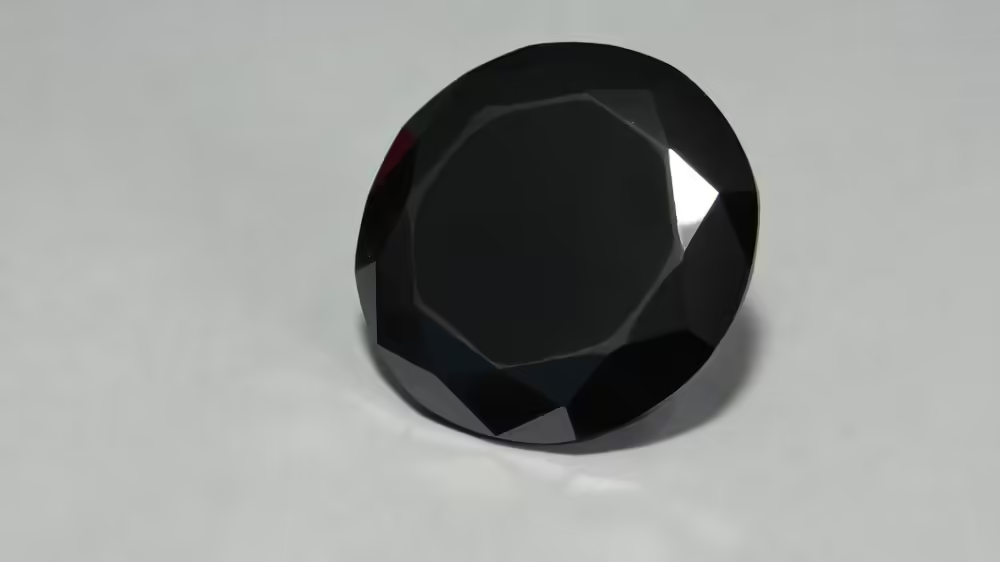
Black Diamond and Carbonado: Table of contents
- Black Diamond Geological Formation
- Rough Black Diamond – Raw Beauty Revealed
- Sources – The Worldwide Reach of the Black Diamond
- Historical Significance of the Black Diamond – Through the Ages
- Black Diamond Varieties
- Black Diamond Colors
- Durability and Wearability of Black Diamond
- Black Diamond Enhancements – Preserving Natural Beauty
- Synthetic Black Diamond – Nature in the Laboratory
- Imitations of the Black Diamond – Discerning the Genuine
- Black Diamond Care – Preserving natural beauty
- Adopting Ethical Diamonds – A Journey to Responsible Choices
Black Diamond Geological Formation
The geological formation of black diamonds varies considerably depending on the specific type of black diamond. In fact, two distinct types of diamond can be found under the name black diamond:
Natural Black Diamond: Inclusions at the origin
Natural black diamonds are formed in a similar way to their colorless counterparts. These diamonds undergo the same geological process deep in the earth’s mantle, subjected to extreme heat and pressure for millions of years.
However, unlike their transparent counterparts, natural black diamonds incorporate numerous inclusions during their formation, scattering light and giving them their captivating dark color.
These inclusions may be graphite, pyrite, hematite or other minerals that create an enchanting tapestry inside the gem, lending it an enigmatic charm.
Polycrystalline Black Diamond: A mystery from outer space
The formation of polycrystalline black diamonds remains a fascinating mystery that sparks the imagination of researchers and gem enthusiasts alike. These diamonds, considered to be of extraterrestrial origin, are thought to be the result of violent asteroid or comet impacts on the Earth’s surface.
This cataclysmic event subjected carbon-rich materials to immense pressure and temperature, fusing multiple small diamond crystals together.
The resulting polycrystalline structure gives these diamonds their distinctive appearance, earning them the nickname “space diamonds” or “carbonados”. Their otherworldly origins add an aura of mystery and rarity to these bewitching gems.
Rough Black Diamond – Raw Beauty Revealed
The strange beauty of rough black diamond crystals lies in their enigmatic roughness, which varies according to the specific type of black diamond.
Natural Black Diamond: A kaleidoscope of shapes
Natural black diamonds, similar to colorless diamonds in their geological origins, present a kaleidoscope of intriguing shapes.
Among the most common shapes are octahedral crystals, with eight faces, and dodecahedral crystals, with twelve.
These symmetrical shapes, together with the triangular crystals, lend a captivating charm to the rough black diamond, captivating gem enthusiasts and collectors alike.
Polycrystalline Black Diamond (Carbonados) : Unbridled complexity
In marked contrast to the well-defined shapes of natural black diamonds, polycrystalline black diamonds, also known as carbonados, display unbridled complexity.
These diamonds do not have a distinct crystal structure, as they are formed from several small diamond crystals fused together. The result is an enigmatic matrix of interconnected crystals, forming a captivating puzzle from outer space.
This unique formation adds a layer of complexity to their transformation, as it increases the hardness of natural diamonds by a notch, making them extremely difficult to cut.
Sources – The Worldwide Reach of the Black Diamond
The supply of black diamonds varies according to type, and each variety offers unique and captivating origins.
Natural Black Diamond: Extracts from Zimbabwe and beyond
Natural black diamonds, prized for their dark appearance and extreme rarity, come mainly from the Marenge deposit in Zimbabwe.
This African nation stands out as a major source of these captivating gems, providing a substantial share of the world’s supply.
Although Zimbabwe is the main contributor, there are a few other sources around the world that produce these enigmatic black diamonds, adding to their appeal and desirability.
Polycrystalline Black Diamond (Carbonados): A tale of Brazil and Central Africa
Polycrystalline black diamonds, also known as carbonados, are shrouded in mystery and found exclusively in two distinct regions: Brazil and Central Africa.
These black diamonds, with their unique formation resulting from cosmic impact events, are exceptionally rare.
The vast majority of carbonados come from the bewitching lands of Brazil and Central Africa, adding to their captivating appeal and exotic character.
Historical Significance of the Black Diamond – Through the Ages
The historical significance of black diamonds has woven a captivating tale through the ages, encompassing both the distinct natural black diamonds and the mysterious charm of carbonados.
Natural Black Diamond:
The Amsterdam Black Diamond is the largest single-crystal black diamond in existence today.
Polycrystalline black diamond (Carbonados) – The enigmatic impact of extraterrestrial origins
Since their discovery in the 19th century, carbonados, with their mysterious extraterrestrial origins, have had a history that continues to intrigue scientists and gem enthusiasts alike.
Historically, carbonados have been associated with superstition and myth due to their unconventional formation and extraterrestrial origin.
Mainly used in industry, it is possible to find cut gems, the most famous being the “enigma”: a cut carbonado diamond of 555.55 carats sold for over 4 million dollars.
The exact details of their discovery remain elusive, but they have attracted attention for their rarity and unique characteristics, evoking a sense of wonder and fascination throughout history.
Black Diamond Varieties
As discussed above, black diamond varieties can be reduced to two entities:
Natural Black Crystal Diamond: This natural diamond owes its color to a multitude of inclusions.
Polycrystalline Black Diamond (Carbonados): This cluster of micro-diamonds is thought to be extraterrestrial in origin.
We can also mention treated black diamonds, or enhanced black diamonds, which are actually colorless to brown low-grade diamonds irradiated to a green hue so dark that it appears black.
This “variety” therefore owes its color to irradiation and not to its inclusions.
Black Diamond Colors
Black Diamond colors offer a captivating spectrum, with unique variations in hue and translucency/transparency:
Natural Black Diamonds: Mysterious Opacity and Salt & Pepper Translucency
Most Natural Black Diamonds have an intriguing opacity, giving off an almost metallic sparkle that adds to their enigmatic appeal.
In this category, some gems may surprise you with their salt-and-pepper translucency, with scattered white or gray inclusions resembling grains of salt amidst the dark background.
What’s more, some diamonds can display a fascinating duality of hues, appearing black when viewed from the front while revealing a dark, brown or dark green body color when viewed from the side.
This dynamic interplay of hues gives each natural black diamond a unique personality, capturing the essence of mystery and charm.
Carbonados: A kaleidoscope of colors, from black to olive green
Carbonados display a captivating kaleidoscope of opaque colors, further enriching the appeal of these celestial gems.
Shades in this category range from classic black and beige-gray to a range of seductive shades, including various browns, dark purples, pinks and even rust tones.
The occasional appearance of olive green adds an unexpectedly exotic touch to these enigmatic diamonds.
Durability and Wearability of Black Diamond
The occasional appearance of olive green adds an unexpectedly exotic touch to these enigmatic diamonds.
Natural Black Diamonds: Hardness of 10 on Mohs’ scale
Natural Black Diamonds, like their colorless counterparts, have an exceptional hardness of 10 on the Mohs scale.
Being the hardest substance known to mankind, black diamonds are highly resistant to scratches, making them suitable for everyday wear in a variety of jewelry designs.
Their eternal beauty enables them to withstand the rigors of everyday life, ensuring that they remain a precious gem for generations to come.
Carbonados: Unbreakable Toughness, Beyond the Ordinary
Carbonados, with their polycrystalline nature, have a hardness that exceeds even that of traditional black diamonds.
Although exact values may vary, these enigmatic gems are renowned for their exceptional durability, thanks to their unique structure formed by the fusion of multiple small diamond crystals. This unshakeable hardness makes carbonados extraordinary gems, ideal for jewelry pieces requiring strong, durable gemstones.
Black Diamond Enhancements – Preserving Natural Beauty
Treated Black Diamonds usually start out as colorless to brown diamonds of inferior quality, often containing numerous inclusions.
The treatment consists in subjecting the diamonds to controlled doses of irradiation.
This process modifies the crystalline structure and imbues the gem with a deep, captivating green hue, tending towards black, imitating the appearance of Natural Black Diamonds.
It is important to note that Natural Black Diamonds and Carbonados retain their appeal in their unaltered state.
Natural Black Diamonds, celebrated for their inclusions, are not treated in the same way as traditional diamonds.
Synthetic Black Diamond – Nature in the Laboratory
While natural black diamonds retain an aura of mystery, laboratory-produced synthetic black diamonds have also appeared on the market.
These laboratory-grown counterparts have their own distinctive appearance, which has seduced many enthusiasts in recent centuries.
They are not a perfect replica of a natural black diamond, as they will be devoid of inclusions. Similar to the process used to create a colorless synthetic diamond, a coloring agent is added to obtain a perfect black or green hue, resulting in a pure, beautiful black diamond.
Polycrystalline black diamond type synthetics (carbonados) are generally created for industry as a hard, durable material.
Imitations of the Black Diamond – Discerning the Genuine
With the growing popularity of black diamonds, the risk of imitations and misrepresentations is also increasing.
Imitation materials can range from black glass, synthetic black spinel and colored moissanite to black cubic zirconia, synthetic corundum and synthetic garnet.
None can faithfully reproduce Natural Black Diamonds as they have no inclusions, but each can be unscrupulously sold as a black diamond or synthetic carbonado if opaque and treated.
Due to their extreme rarity and value, it is extremely important to buy natural black diamonds and carbonados from reputable diamond specialists and certified diamond jewelers who can guarantee the authenticity of these alluring gems, as they represent a specific niche that not all gemologists are familiar with.
Treated and synthetic black diamonds are more commonly available from specialists and reputable jewelers.
Black Diamond Care – Preserving natural beauty
Caring for Black Diamond jewelry is essential to maintaining its timeless appeal. To preserve their brilliance, we recommend gently cleaning black diamond jewelry with mild soapy water and a soft brush. Avoid exposing these gems to harsh chemicals or extreme temperatures, and store them separately from other jewelry to avoid scratches.
It is imperative not to use mechanical cleaning with Natural Black Diamonds and Treated Black Diamonds, as their numerous inclusions cause instability in the diamond’s structure and can lead to brittleness and fractures.
Synthetic Black Diamonds and Carbonados can easily be cleaned with mechanical cleaning tools, as they have no internal instability and are perfectly scratch-resistant. One of the advantages of being the hardest material on Earth.
Because of their perfect hardness and impressive resilience, Carbonados should stand up well to mechanical cleaning, but their porous nature, their carbon-graphite mix and the general scarcity of studies on these particular diamonds make evaluation difficult.
Adopting Ethical Diamonds – A Journey to Responsible Choices
The diamond industry has made significant efforts to address ethical concerns related to diamond mining practices.
The term “conflict-free diamonds” became widely known after the release of the film “Blood Diamond”, which highlighted the financing of civil wars by the diamond trade.
Although the Kimberley Process aims to prevent conflict diamonds from entering the world market, there are still challenges to be met to ensure fully ethical practices in diamond sourcing.
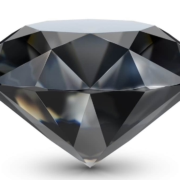
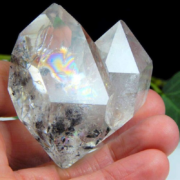
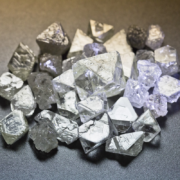
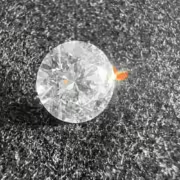
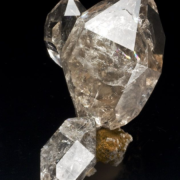
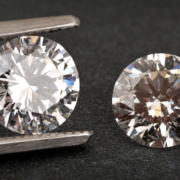

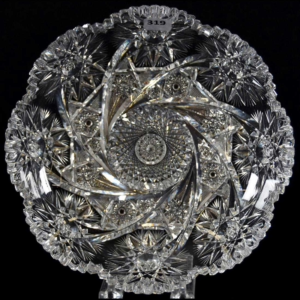
Leave a Reply
Want to join the discussion?Feel free to contribute!